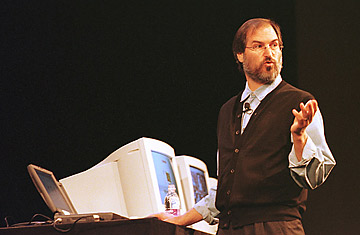
"Back then he was uncontrollable," an early Apple board member said of Steve Jobs in explaining why, in 1985, the board voted to fire him. "He got ideas in his head, and the hell with what anybody else wanted to do." Even former Pepsi President John Sculley, who had joined Apple to play the role of Jobs' babysitter of sorts, couldn't handle working with him. In fact, Sculley orchestrated the ouster himself, comparing Jobs to a relentless zealot. (Though, to be fair, their relationship didn't exactly start well; Jobs invited Sculley to join Apple by saying, "Do you want to spend the rest of your life selling sugared water to children, or do you want a chance to change the world?") But in 1997, with the company operating at a loss and Microsoft's Windows 95 flying off the shelves, Apple's board decided that a zealot was just what it needed. In August of that year, Jobs rejoined the board in august, becoming CEO — at first, with an "interim" — the following month. "He had become a far better leader, less of a go-to-hell aesthete who cared only about making beautiful objects," wrote Fortune's editor-at-large Peter Elkind of the co-founder's triumphant return. "Now he was a go-to-hell aesthete who cared about making beautiful objects that made money." In time, he became recognized as one of the company's most valuable assets. In2009, after news broke that Jobs' failing health had forced him to take medical leave, the company's stock fell almost 10%.